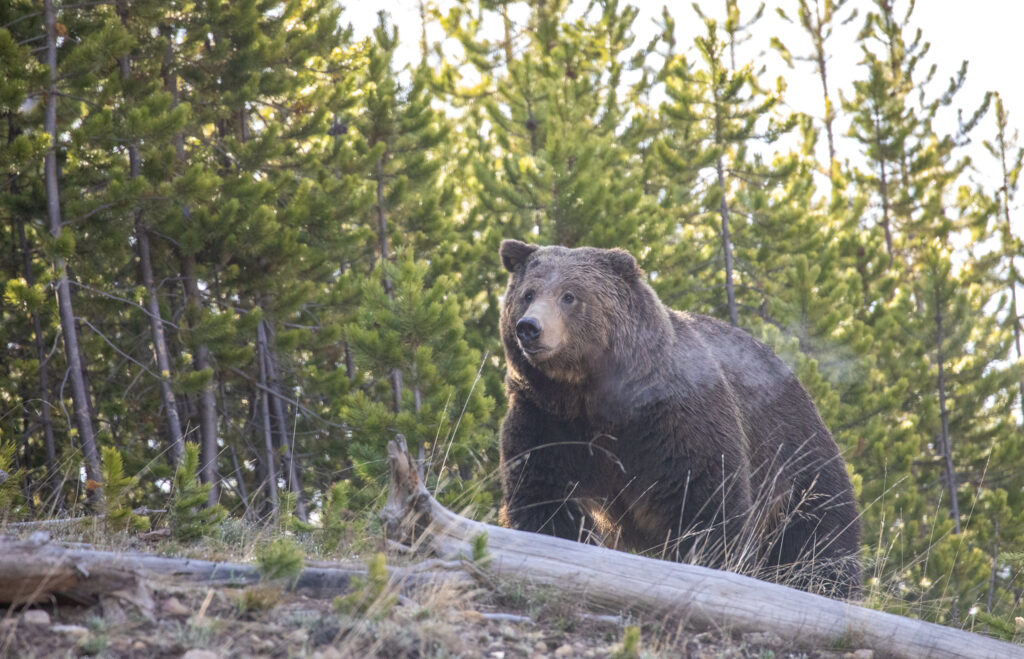Grizzly bear photographed in Yellowstone National Park on May 19, 2020. (Photo by Jim Peaco/National Park Service)
As Montana pushes to have grizzly bears delisted from Endangered Species Act protections in portions of the state, the state’s Department of Fish, Wildlife and Parks has launched an information dashboard to track human-caused grizzly bear deaths.
FWP said in a news release the dashboard is part of an effort to increase transparency, educate Montanans on why grizzlies are killed or die when they are currently federally protected, and to show that its management strategy has the state ready to manage grizzly bears in portions of the state on its own.
“Tracking grizzly bear mortality is a key metric when we look at bear management,” said Quentin Kujala, FWP’s chief of conservation policy. “This dashboard allows us to be transparent with the public on what kinds of mortality we’re seeing and what the causes are. It will also help reinforce our consistent message of securing attractants and being bear aware to avoid conflicts.”
The release of the dashboard also comes after the killing of nine grizzlies in Montana since the start of August, and 15 total since the start of July. In August, three were killed by U.S. Department of Agriculture Wildlife Services because of livestock conflicts, another was killed by a car or train in Lewis and Clark County, two in Pondera County were illegally killed, and one in Powell County was killed because it had been getting into chicken coops and garbage near homes.
Two bears have been killed in September. One was killed in Gallatin County by hunters after it charged them, FWP said, while the other was euthanized south of Libby after getting into chicken coops and other attractants.
In total this year, according to the dashboard, 22 grizzly bears have died in human-caused deaths.
The Gianforte administration has asked, and pushed for, grizzlies to be delisted in the Greater Yellowstone and Northern Continental Divide ecosystems. Grizzly bears are currently a threatened species in the Lower 48, but conservation groups believe the state is only interested in allowing grizzlies to be hunted, which they say could threaten the recovery the population has undergone.
The state earlier this month released its final environmental impact statement for its grizzly bear management plan, another step the state hopes will convince the U.S. Fish and Wildlife Service to agree to delist the bears in the two ecosystems. It also this summer translocated two grizzlies from northwestern Montana to the Yellowstone ecosystem as part of those efforts.
The federal government said earlier this year it will release a decision on whether to delist the grizzlies in those two ecosystems by the end of January.
The dashboard will update every day at 1 p.m. and will reset at the start of each new year but contain data from previous years in its archive. FWP said tracking grizzly bear populations and mortalities will be a key piece in the state’s effort to manage grizzlies.
“We know the public is interested and passionate about grizzly bears and their management,” Kujala said in a statement. “This dashboard lets them see what’s happening with bear mortalities on a daily basis.”

